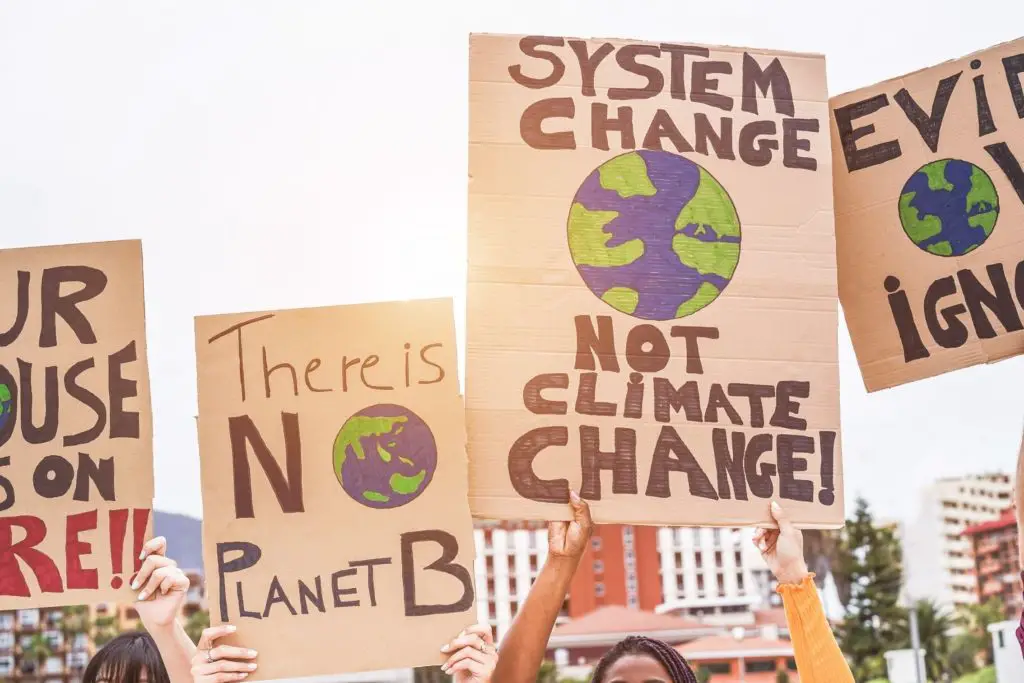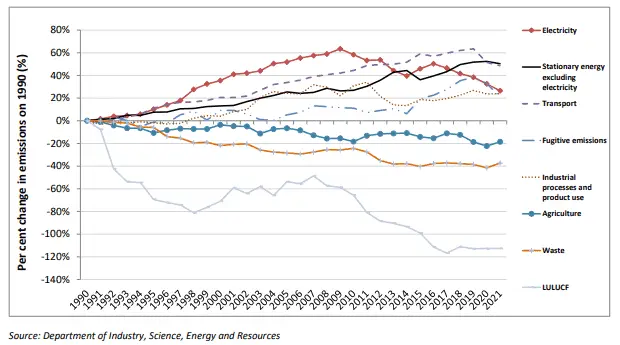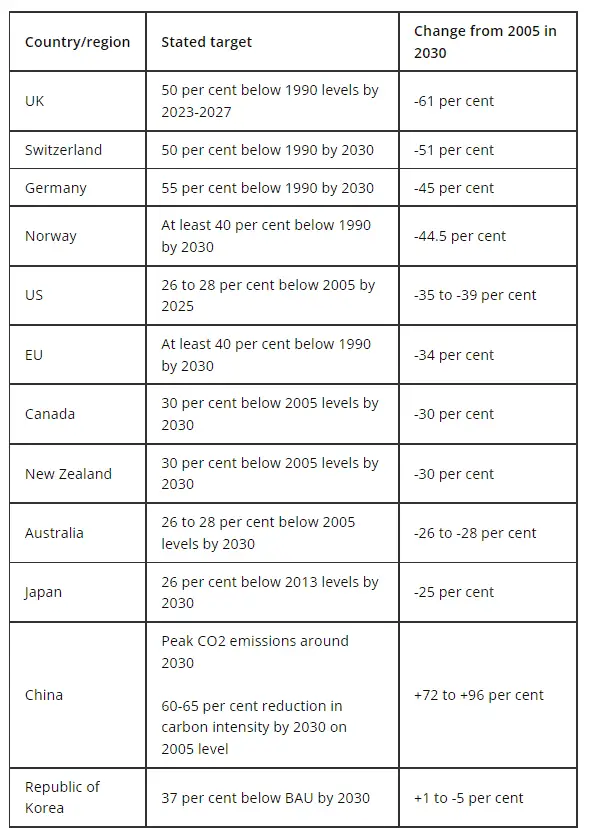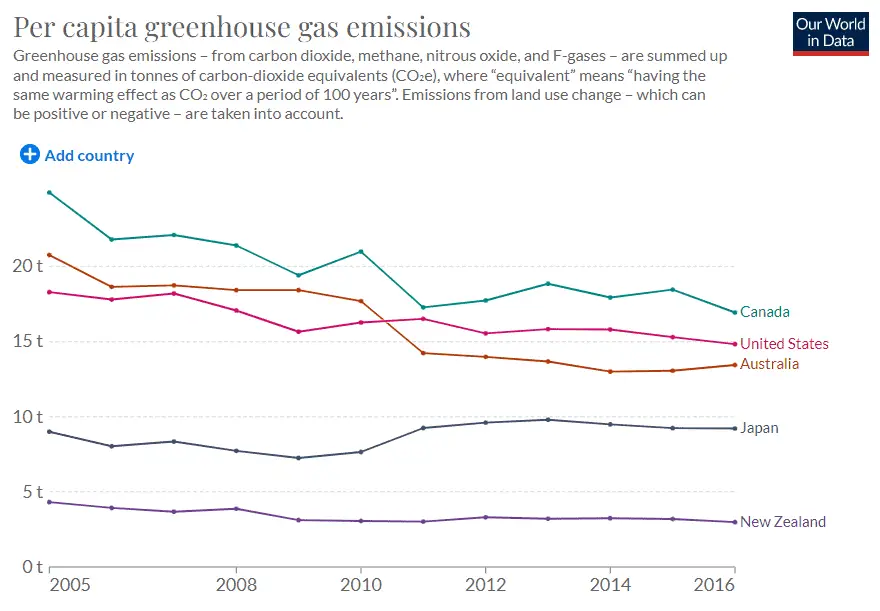#VoteClimate
Our Governments Record on Climate Action

Summary:
- By including the effect of land use in calculations of greenhouse gas emissions, the Government has been able to claim that Australia has reduced its emissions over time. Land use includes the effects of deforestation and reforestation efforts.
- If we exclude the effects of land use, our emissions from other sources have actually increased when compared to 1990 levels. These other sources include electricity, transportation and agriculture.
- The Australian government may use “credits” from prior years to offset emissions in more recent years. This is not in keeping with the spirit of the Paris Climate Change agreement. The point is to reduce emissions from current levels – not to use “credits” from prior agreements.
- Our emission reduction target for 2020 was a 0.05% reduction from 1990 levels. The bar was set very low so it isn’t a great achievement when the Government proudly claims we have met our Kyoto targets.
- We have set the 2005 year as our baseline to met targets set for 2030. The 2005 year was one of the highest for our GHG emissions so it is easy for the government to claim we have reduced our emissions when they are starting from a high point anyway.
What has been achieved so far by the current government?
In 2019 the current Liberal government put together a Climate Solutions Package. In this document, they outlined their record to date on addressing climate change. Keep in mind they have been in government since 2013.
Here are some of the achievements they note (1):
- Setting up the Emissions Reduction Fund, which is a voluntary scheme that aims to provide incentives for a range of organisations and individuals to adopt new practices and technologies to reduce their emissions.
- Using the Australian Renewable Energy Agency (ARENA) and the Clean Energy Finance Corporation (CEFC) to invest in low emissions technologies. ARENA has provided $1.347 billion in grant funding to 441 projects including large scale solar and pumped hydro. The CEFC has invested over $6.4 billion to more than 110 projects
- Adopting a National Energy Productivity Plan, which improved Australia’s energy productivity by 40 per cent, over the 15 years to 2030. The NEPP has already delivered stronger energy standards for products such air conditioners, swimming pool pumps and white goods. Minimum performance standards for new buildings and major renovations are also having positive impacts.
- The phase-down of hydrofluorocarbons (HFCs) has been legislated and Australia is ahead of 85 per cent reduction target set for 2036
- Introducing carbon neutral certification, which helps businesses voluntarily measure, reduce and offset greenhouse gas emissions
With regards to greenhouse gas (GHG) emissions, the Government has made several claims (2):
- Australia’s emissions are at their lowest levels since records began in 1990;
- Emissions are 20% lower than in 2005 (the baseline for the Paris agreement);
- Emissions are lower now than in any year under the last Labor government.
- Since 2005, Australia has reduced our emissions faster than Canada, Japan, New Zealand and the U.S.
- Australia has a strong record of meeting targets – having beaten our 2020 Kyoto target by 459 million tonnes.
- We are on track to meet and beat our 2030 Paris target of reducing emissions by 26 – 28%.
- On a per-person basis, that’s a reduction of 48 – 49% (on 2005 levels). This is more than France, Germany, Canada, New Zealand or Japan are expected to achieve over the same period.
Sounds pretty good, doesn’t it?
So are the Governments claims about climate action true?
The government has been heavily criticised for misleading the public when making the claims numbered 1 – 7 above. When looking at emissions data, I have to agree.
The best report I have seen that assesses the current government’s position on climate change is this report by the Climate Council: https://www.climatecouncil.org.au/wp-content/uploads/2019/04/Climate-Cuts-Cover-Ups-and-Censorship.pdf
There are two key points from this report that I felt was really revealing:
- The government has included land-use emissions in its calculation of GHG emissions and
- The government is likely to use carryover credits from the Kyoto protocol to show that it is meeting future targets.
Let me explain these points a little bit more:
1. Land Use Emissions
Land use involves activities that release greenhouse gases (such as deforestation) as well as activities that sequester (absorb) greenhouse gases (such as planting trees).
Each year the Australian government is required to report on the countries total GHG emissions (broken down by sectors producing those emissions). Our government includes land-use emissions in its calculation of GHG emissions.
The reason why this is an issue is that reforestation results in negative emissions that offset actual GHG emissions. Of course, we want reforestation. But these figures are meant to represent the countries GHG emissions – by including land-use emissions, the government is essentially reporting on net emissions, not the actual amount of GHG emitted by our country.
And there is a real difference between the two, as can be seen by the graph below (3) :

The release of GHG emissions from deforestation in the earlier years was very high. This is why the red line, which includes land-use emissions, is significantly higher than the yellow line.
From 2007 there were significant reforestation activities (hmmmm,.. when Labour was in government) and the red line dips. So the government is able to claim emissions have dropped.
They haven’t dropped.
They have just been offset somewhat by reforestation activities and we are also benefiting from the fact that there has been a massive change in land management practices.
Very little has changed when we look at GHG emissions from other sources. In fact, if you look this graph, you can see that the % change in emissions when compared to 1990 level have consistently been positive for all the major polluting sections of our economy (10):

And a little know fact I learned when looking into this – reforestation is not a perfect solution. All the carbon being sequestered and supposedly “offset” could go up in flames in the next bushfire. This is why claiming reforestation has reduced our emissions is such a misleading claim (3).
To my knowledge we are the only country that includes land-use emissions in its calculation of greenhouse gases – the Howard government ensured a special clause was put into the Kyoto protocol to allow Australia to report on this net figure (3).
This whole set up allows the government to make these claims:
- Claim 1: Australia’s emissions are at their lowest levels since records began in 1990 – not true it you look at the yellow line above. Emissions from energy production, transport, agriculture etc. (which is what the yellow line represents) has actually increased since 1990
- Claim 2: Emissions are 20% lower than in 2005 (the baseline for the Paris agreement) – if you exclude the off-setting effects from land use and follow the yellow line, you can see that emissions have actually increased since 2005.
- Claim 3: Emissions are lower now than in any year under the last Labor government – Labour was in government from 2007 – 13 and the coalition thereafter. Whether you include land use or not, emissions have actually increased from the time Labour was last in government (2013). No doubt the current government is basing their claims against 2007 emissions (I’m only guessing). And if they are based their claims based on cumulative emissions, well that’s where their use of land-use emissions allows the current government to pain this convenient story. With land-use included, the emissions while Labour was in government was so much greater (represented by the area under the pink line during 2007 – 12 compared to 2013-18). If you exclude land-use emissions, the emissions while Labour was in government was less (represented by the area under the yellow line during 2007 – 12 compared to 2013-18).
- Claim 7: On a per-person basis, that’s a reduction of 48 – 49% (on 2005 levels). This is more than France, Germany, Canada, New Zealand or Japan are expected to achieve over the same period – I’m not going to get into this claim in detail but I will say, using 2005 levels as the baseline is pretty sneaky. When land-use emissions are considered, the 2005 year is one of the highest years for emissions. So of course we will be able to reduce our emissions by almost 50% when compared to that year! If we compared it to 1993 could we claim the same thing? I doubt it.
2. Carryover credits
As explained in the Climate Council report (3) if a country reduces emissions by a larger amount than agreed during the First Commitment Period (2008-2012), they can use the carryover towards meeting commitments in the Second Period (2013-2020). This has been agreed upon under the Kyoto agreement.
The next agreement was the Paris agreement which covered the 2020 – 2030 period. There has been no agreement regarding the use of carryover credits to meet the Paris agreement goals. But it is noted, “Several nations, including New Zealand, Denmark, the Netherlands, Sweden, and the United Kingdom, have publicly stated they will not use carryover credits from the Kyoto Protocol to meet emissions reduction targets under the Paris Agreement” (3).
Until recently, Australia was clear in stating that it would be using its carryover credits to meet the 2030 goals. Mainly because it seemed there was no way Australia would be able to meet the pathetic target it set for itself for 2030 without using the credits.
The effect of using the credits is demonstrated in the graph below (3):

Recently Scott Morrison has flagged that the aim is not to use the carryover credits (4). They feel they no longer need to rely on the credits to meet our targets. However, no firm commitment has been made to rule this out as a strategy to meet our 2030 goals (5).
So it’s entirely possible that the Liberal government will use carryover credits to meet future emission reduction targets.
And that’s not reducing emissions – that’s just clever accounting.
Which is embarrassing. And deceptive. And not in keeping with the spirit of any climate change agreement.
Back to those claims the government has made:
Claims 6: We are on track to meet and beat our 2030 Paris target of reducing emissions by 26 – 28% – well of course, if we are going to use “credits” from prior years to say we have reduced emissions during the 2020 – 2030 period. And about those goals…
How do our goals stack up anyway?
Our sketchy 2020 goals:
Felt like murky waters trying to find out what our commitment was for 2020. Finally found that there were two commitments (of sorts) made under the Kyoto agreement for 2020 (6):
- A multi-year target relating to emissions between 2013 and 2020, where we undertook to keep average emissions for this period at 99.5% of their 1990 level and
- 5% reduction by 2020 from 2000 levels
The government will argue that the first is the only legally binding commitment and the second is just a pledge – this is technically true (6). We met the first, as our 2013-20 emissions are only 87% of the 1990 level. However, we did not meet the 5% reduction pledge (6).
If you dissect the first commitment you realise how pathetic this all is. In 1990 there were high levels of deforestation and land clearing. As a result, Australia released a lot of GHGs (see the red line in the first graph above). So it wouldn’t take much to reduce our emissions from 1990 levels.
After 1990 Queensland changed its land management practices so there was a sharp decline in GHG emissions due to land use (7) and further declines due to reforestation from 2007.
So this allows me to circle back to another claim:
Claim 5: Australia has a strong record of meeting targets, having beaten our 2020 Kyoto target by 459 million tonnes – umm yeah, sure it is true that the government has been able to met the target of reducing emissions by 0.5% from 1990 levels but this is such a really low bar and falls short of the pledge for a 5% reduction from 2000 level.
Our pathetic 2030 goals:
Finding out this goal was easier as the government has had to be very clear about this after the last COP. Our goals is: 26 to 28 per cent below 2005 levels by 2030
Bit of game playing all over again because 2005 is another year where emissions, with land use included, is unusually high. It’s easier to show an improvement in emission levels when you are starting from the highest point possible.
Comparing us to other countries
Comparing us to other countries
Well I didn’t get too in depth into this but I did discover two things of note:
2030 targets
The table below summarises the targets set by different countries, as well as a projection of how much emissions will reduce compared to 2005 levels (8). We aren’t the worst but we certainly aren’t up there.

There is little consistency in the targets and the baseline years, so it does make you wonder how serious these countries are about settling targets that will result in the real change (8).
Who is the fastest?
So the one I felt was difficult to confirm was Claim 4: Since 2005, Australia has reduced our emissions faster than Canada, Japan, New Zealand and the U.S.
But I did grab the following graph which shows the per capita emissions from 2005 to date (9):

Eye-balling this graph, it seems Canada has reduced its emissions a lot quicker than Australia.
More good news...
More good news...
The Climate Council report has a whole lot more to say about the government’s record on climate change – of course none of it is good from their perspective. Here are some points:
- Legislation was introduced to abolish the Carbon Pricing Mechanism
- The Climate Commission was abolished while the Climate Change Authority had its budget slashed. Collectively, these cuts eroded the ability of the climate science community to provide cutting edge information on climate trends, future projections, impacts, risks and solutions
- The Renewable Energy Target has been cut back from 41,000 GWh to 31,000 GWh
- In 2016, the Federal Government censored a UN report about climate change and World Heritage sites, asking the authors to remove any reference to Australian sites.
The Climate Council clearly has its own agenda.
But the points I pulled from the report and the graphs I have taken a snapshot of, are based on data that the government themselves make available through quarterly reporting on GHG emissions – the data is not made up by the Climate Council. They just present it differently.
I don’t doubt the government has done some great things to address climate change. There were some things mentioned at the beginning of this post that stack up. But it has not done as great as it has claimed when it comes to managing GHG emissions. And their efforts in setting ambitious goals that could result in some real change have been pathetic.
xx Tahsin
References:




